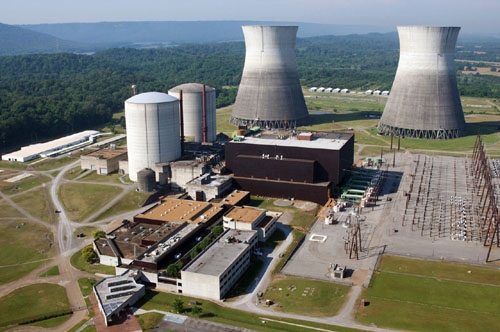by WorldTribune Staff, August 26, 2019
Nuclear plants in the United States are not prepared for an electromagnetic pulse (EMP) attack, the responsible federal agency said.
Following a report by the Electromagnetic Defense Task Force, the Nuclear Regulatory Commission (NRC) admitted to a high level of “uncertainty” in the event of an EMP attack.

“If all engineered and proceduralized mitigation measures failed and a meltdown were to occur, there is a very large uncertainty in off-site consequences,” the NRC said.
“What’s more, they don’t know how deadly an attack would be or how far the radioactive ‘plume’ from a meltdown would extend and suggested instead that deaths would first come from an inability to find food and clean water,” Paul Bedard wrote for the Washington Examiner on Aug. 23.
Amid increasing concerns over an EMP attack carried out against the United States by China, Russia, North Korea or Iran, President Donald Trump in March of this year issued an executive order directing the Pentagon to look into the issue.
Trump is said to be set to issue a second executive order which will “put teeth” into the initial order which called for “improving the nation’s resilience to the effects of EMPs.”
Officials have warned for years that the U.S. electric grid is not safe from an EMP attack.
“The NRC staff has not analyzed scenarios with extended and widespread failure of off-site protective actions, which continue for more than several days. Without prompt protective actions, off-site doses may reach levels where there is an elevated lifetime risk of cancer to off-site populations. For the population, failure of access to food and clean drinking water would likely prove much more hazardous to health and safety,” the NRC said.
The NRC said “modeling” suggested that there would be “no early radiation dose fatalities far from the plant.” But it didn’t indicate how far, prompting the task force to cite about 10 miles.
“More information is needed to determine if the extended plume release (beyond 10 miles) will impact the public and military assets and personnel. The potential release of radiation can trigger panic,” said the task force.
Bedard noted that the NRC “apparently won’t protect the energy plants, referred to in the report as the nation’s ‘crown jewels,’ from an attack. The reason: That’s the Pentagon’s job.”
The task force and many in the national security community reportedly believe the NRC isn’t doing enough to protect against an EMP attack, or even test for it.
The NRC said that it had run computer simulations of attacks but that plants are not required to protect against an EMP.
The agency “also seemed to dismiss some of the task force’s concerns, including the need for lots of diesel fuel to run generators needed to supply outside energy,” Bedard wrote.
“The NRC will not address threats to their power stations that they feel other agencies should take care,” said a task force member.
In one example, the NRC shrugged off concerns that an EMP attack would even penetrate a nuclear plant. “NRC does not anticipate significant penetration of EMP fields into a nuclear power station due to design of the structures,” the NRC said.
The task force said: “Since no actual testing has been conducted, such assumptions are imprudent. EMP tests conducted on actual equipment show that modeling can be wrong by orders of magnitude. Suggest actual physical testing. USAF nuclear command and control facilities and missile silos are often underground and even covered by tens of feet of concrete and metal rebar. This does not negate the need for EMP hardening. Such facilities are hardened to careful military specifications.”
Intelligence Brief __________ Replace The Media
